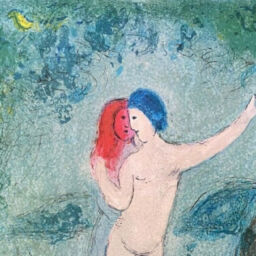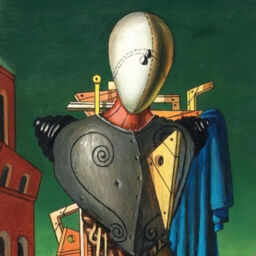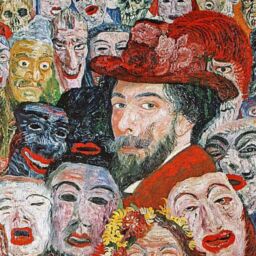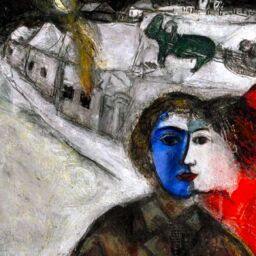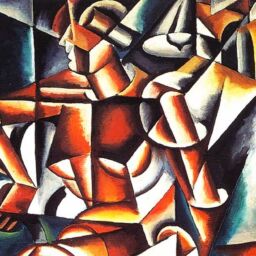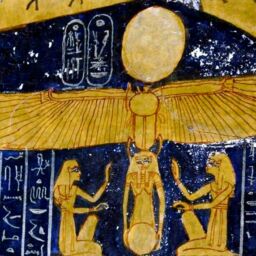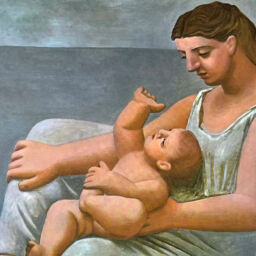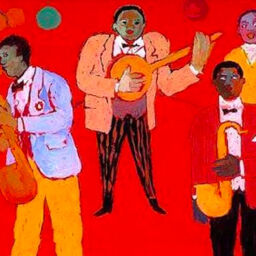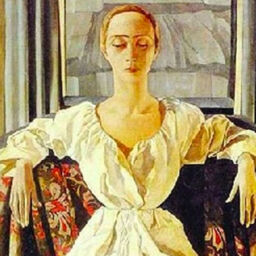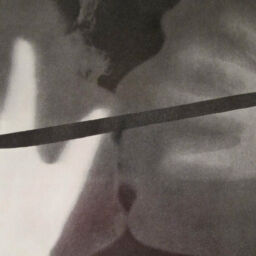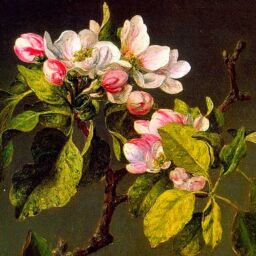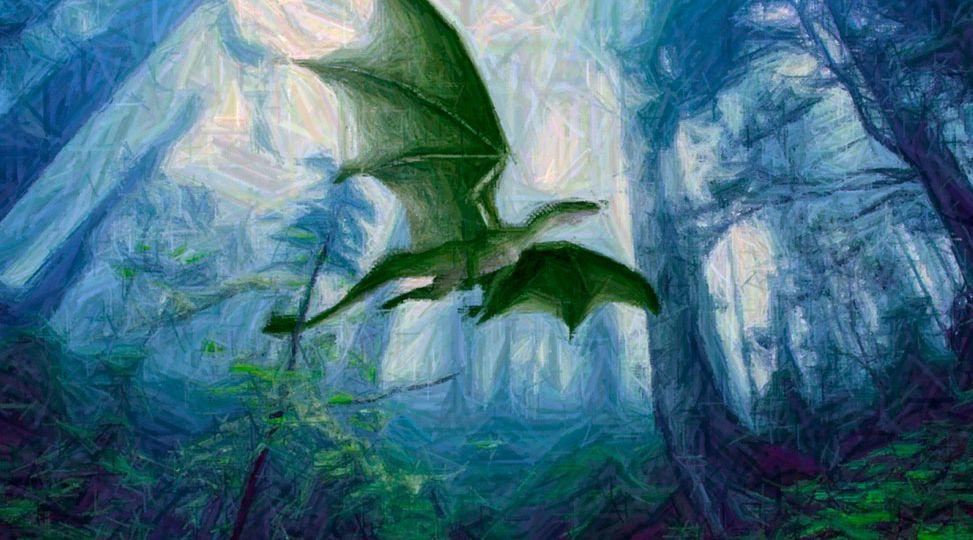
Seeing One’s Self
The Archetypal Typology of How to Train your Dragon
, January 14, 2016

Hiccup – an unlikely name for an unlikely hero, and yet Hiccup is a hero indeed and one who saves the day by rediscovering and developing his authentic self. In the animated children’s film How to Train Your Dragon we witness Hiccup reclaiming his true nature and developing his dominant function, a function-attitude cast into shadow in an attempt to fit in with those who surround him. From the first scene, we see how different Hiccup is from the fictional Viking culture he has been raised in, a difference that stimulates the growth of all.
Hiccup and his dragon together represent introverted feeling (Fi), the superior function, aligned in Beebe’s model with the Hero. His friend Astrid embodies extraverted thinking (Te), the inferior function and Hiccup’s Anima. Stoick, the leader of the Vikings and Hiccup’s father, represents extraverted sensation (Se), found in the 7th position—a shadow function and Hiccup’s Trickster, according to the Beebe model. While other characters could also easily be linked with a function-attitude, for the purposes of this paper I will focus on the ones named above, as they provide a rich and meaningful exploration of the function-attitudes and the archetypal energies they enliven. The interplay between Hero and Anima and Hero and Trickster bring about the Hero’s development and highlight the actualized capacity of the function-attitudes.
Hiccup, with introverted feeling superior and extraverted intuition (Ne) auxiliary (INFP), is not your typical Viking. While others embrace the adversarial relationship with dragons that is the mainstay of their culture, Hiccup struggles to do so. He is not powerful. He is not physically strong. He is not loud and decisive. Yet, as our story begins he does attempt to be that which he is not: extraverted sensing superior with introverted thinking (Ti), auxiliary (ESTP). Having decided that killing a dragon is the only way he will belong, he sets out to do so. Using a machine he has built he shoots down and injures a dragon, but not just any dragon: This is a Night Fury, a creature of the shadow, “the unholy offspring of lightning and death itself” (Arnold, 2010). Just as Hiccup’s superior function, his Hero, has been wounded by his culture and his father, this dragon is wounded as well, a figure we will come to see as Hiccup’s inner truth. This is the story of an individual recognizing the wounding that has occurred, and claiming back his authentic power by developing his Heroic function, one that is not valued by the dominant culture. By developing his true superior function Hiccup is able to not only learn the value of this function for himself but to help others to see its value.
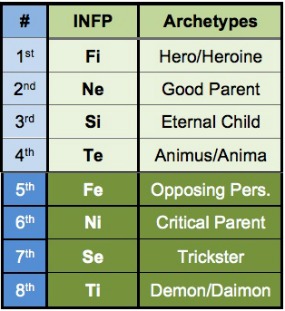
Hiccup and Toothless – the Hero
Within moments of meeting Hiccup, we recognize that he is different from those who surround him, but also that he is trying to find his place. As much as he attempts to be practical and do what is logical, he is pulled to do what he feels to be right. In considering those with a preference with introverted feeling, Haas and Hunziker (2014) noted that “sometimes it is only when their values are violated that they become aware of these values” (p. 104). Hiccup violates his own values in trying to fit in, but when confronting a life-or-death situation—when Hiccup must choose between killing the dragon or setting it free—he becomes intensely aware of what his true values are: the life of this one other is more important than the reigning beliefs of his culture. Hiccup’s extraverted intuition (Ne), his auxiliary and archetypal Parent function, sees other possibilities. This decision is a turning point and represents the beginning of Hiccup’s reclaiming of his introverted feeling.
As Hiccup begins the process of befriending and taming the Night Fury, whom he names “Toothless,” he hides this new partnership from others. Haas and Hunziker (2014) observed that because the deeply held values of introverted feeling cannot be altered, INFPs may “assume that everyone else’s values are unchangeable too” (p. 106). Hiccup noted early in the film that the Vikings have “stubbornness issues” (Arnold, 2010), reinforcing his need for stealthy self-integration. Yet as the film unfolds and Hiccup’s newly claimed Hero function gains strength, as his partnership with Toothless melds the two into one, we do see his introverted feeling in action. When that which he values is threatened, Hiccup becomes a leader, organizing the others to protect both his people and the dragons. Haas and Hunziker (2014) stated that those with a preference for introverted feeling “influence others primarily through their behavior. They lead by example” (p. 107). Indeed, it is Hiccup, the one who didn’t fit in, the one who is different, who shows the others what it means to be a hero.
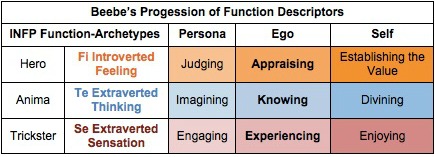
In Beebe’s model, the function in the Hero or dominant position “organizes adaptation and initiates individuation” (Beebe, 2014a). Hiccup’s eventual embracing of his Hero function makes room for a new style of Hero to emerge. The typical hero encounters and slays the dragon. Hiccup does not. In keeping with introverted feeling’s focus on harmony, he instead befriends the dragon and forms a true partnership. Sharp (1987) noted a tendency to “break with traditional values, as their ideas … are very original” (p. 74). Hiccup’s ideas are original, ground-breaking in his culture. Viking heroes conquer and destroy; they do not seek to be in harmony with their values. And yet by film’s end, we see Hiccup embraced as Hero, leading the way, through his own adaptation, for the adaptation of his culture. Hillman (1971/2013) stated, “The developed feeling function is the reason of the heart which the reason of the mind does not quite understand” (p. 110). Even if not quite understood, the reason of the heart has found its place.
Astrid – Anima
Beebe (2005/2006) described the eight functions as “nothing less than capacities for consciousness residing within any individual” (p. 39). Astrid is the character who leads Hiccup to the capacity for extraverted thinking, an individual who both shows him his limitations and pushes him to be true to himself. Extraverted thinking is marked by a drive for “structure and organization,” the ability to spot illogic and inconsistencies immediately,” and a seeking of “clarity and order in the environment” (Haas and Hunziker, 2014, p. 74). This is an outward focused logic, and one that Astrid easily embodies. Astrid excels in dragon training, always knowing what to do next and how the steps fit together. She notices when Hiccup’s behavior changes and is the first to call him on it in his new partnership with the dragon. As she tells him, “I normally don’t care what people do, but you’re acting weird, well, weirder” (Arnold, 2010). At first, unable to see the logic in the situation, she resists this different way of interacting with a dragon. However, once she is able to see the possibilities of this style of interaction, her actions become integrated with his and we see introverted feeling and extraverted thinking working in unison towards a common goal.
Beebe’s (2014b) analysis of how extraverted thinking develops shows a progression from regulating (persona) to planning (ego) and finally, to enforcing (Self). As Hiccup integrates his anima, he is able to reclaim this energy. In the film’s first scene, we see Hiccup swooning over Astrid and her confident ability to engage in decisive action. As he develops this function, he plots and plans: how to find the dragon he shot down, how to repair the tail he damaged, how to save Toothless. His planning begins to move to action, and finally we see Hiccup emerge as a confident leader, able to harness his logic to defend his values. This shift begins in the moment Hiccup looks into the eyes of the Night Fury and recognizes himself. This moment marks the beginning of Hiccup’s valuing the strengths within himself over those valued by his culture. His own sense of self starts to show itself in his actions; we witness a reclaiming of his introverted feeling that had been cast into the shadow, and this reclaiming makes space for his extraverted thinking to develop as well.
In Beebe’s model, the Anima position is “the gateway to the unconscious” (Beebe, 2014a). Von Franz observed that the inferior function is “very much under the control of the unconscious, which limits what we can do with it” (Sharp, 1987, p. 40). As such, Astrid continues to surprise Hiccup, keeping him off-balance and alert, but in a way that enhances their partnership instead of diminishing it. Sharp (1987) noted that the anima is the connection between conscious and unconscious, providing “the potential to replace this tension of opposites with the harmony of wholeness. And it is through the undifferentiated, incorrigible inferior function that they do their best work!” (p. 40) Without Astrid to force Hiccup to consider things from a different perspective, the development of his wholeness would suffer.
It is Astrid who questions Hiccup’s behavior, who points out his limitations. It is Astrid who first witnesses the joining of Hiccup and Toothless as a partnership, who pushes him to continue to fight for Toothless. When Hiccup laments that in 300 years he is “the first Viking who wouldn’t kill a dragon,” it is Astrid who replies, “First to ride one, though” (Arnold, 2010). It is Astrid who urges him to look deeper, to clarify, to decide who he is and what he values.
Stoick – Trickster
Stoick the Vast, Hiccup’s father, embodies extraverted sensation. In him, we see a character confident and strong in the moment, enlivened by what his senses bring to him. As an extraverted sensing type, Stoick “seeks the full sensory experience of the environment in the moment” (Haas and Hunziker, 2014, p. 34), putting himself in the middle of the battle, of the attack, of whatever is happening around him. He demonstrates extraverted sensing’s “knack for being a ‘mover and shaker’ when it comes to concrete tasks,” (Haas and Hunziker, 2014, p. 37), spurring his village to action by his words and deeds. He struggles to understand Hiccup, so different from himself and so removed from the here and now. Upon returning from an unsuccessful search for the dragons’ nest, he finds that Hiccup has been an unexpected success in dragon training. Excited, he seeks out Hiccup, hoping for a blow-by-blow, in-the-moment exchange, of what his son has experienced. What follows is an awkward moment at best, a clear vision of the two not yet being able to truly connect.
According to Beebe (2014b) the development of extraverted sensation involves a progression from engaging (persona) to experiencing (ego) and finally, to enjoying (Self). As Hiccup integrates this function, we see this play out. At first, he goes through the motions, showing to others a forced ability to be in the moment and engaged. As he lets go of his inauthentic self-image and begins to connect with Toothless and his introverted feeling, we see him begin to truly be in the moment and respond. We watch as Hiccup and Toothless learn to fly as a team. Hiccup begins by using a cheat sheet—a list of instructions that he can refer to as he moves from position to position. But unexpectedly he loses the sheet to the wind and the two separate and fall through the sky, each unable to soar with the other. In spite of this calamity (or maybe because of it), they reconnect and Hiccup is able to fully be present and experience the moment without his notes to guide him, allowing his knowledge of the moment to lead. This development, once integrated, leads to a true enjoyment—a pure spontaneous joining of these two halves of the whole.
In Beebe’s model, the Trickster position is the “area of manipulation and paradox.” The Trickster is “mischievous, creates double binds, and circumvents obstacles” (Beebe, 2014a). Stoick is all that and more. His actions cause Hiccup to paint himself into a corner. As our film begins, Hiccup is determined to be a dragon fighter, telling his father, “I can’t stop myself—I see a dragon and I have to just kill it, you know. It’s who I am, Dad” (Arnold, 2010). His father is equally determined that he not be a dragon fighter. This situation quickly reverses itself: once Hiccup actually encounters a dragon face-to-face, he realizes he can’t kill a dragon. Upon finding the Night Fury he shot down, he draws his knife, declaring, “I’m going to kill you dragon. I’m going to cut out your heart and take it to my father” (Arnold, 2010). He looks into the dragon’s eyes, sees himself, and there ends his fledgling dragon-fighting career. He returns home, only to find his father has reconsidered and now wants him to pursue dragon training: double bind effectively created. Throughout the film it is this Trickster character, “the shadow side of the eager-to-please but oh-so-vulnerable-to-the-feelings-of-others internal boy” (Beebe, 2005, p. 42) that causes mischief for Hiccup’s developing sense of self. It is only when Hiccup and Stoick are able to see their similarities that this archetypal energy is truly integrated. As Gobber states to Stoick near the film’s end, Hiccup is “every bit the stubborn, bull-headed Viking you ever were” (Arnold, 2010). Yes, yes he is, but now, finally, in a way that honors his own unique style of Hero.
While the interplay between Hero and Anima and Hero and Trickster are critical to the development of the Hero, the interplay between Anima and Trickster must also be considered. Beebe (personal communication, August 24, 2014) has observed that the Trickster might play a role in “sophisticating the anima.” This sophistication by the shadowy Trickster, an archetypal character of mischief and manipulation, can be seen as a necessary catalyst in nudging the Hero’s relationship with the Anima from one of tension to one of support and agreement. Indeed, Hiccup’s relationship with Astrid is rife with tension; it is only after the two are united in their quest to change Stoick’s plan to destroy the dragons’ nest that a true partnership is formed. Stoick, the archetypal Trickster, has played his part and the Anima is readied for her role in developing the Hero.
Seeing One’s Self
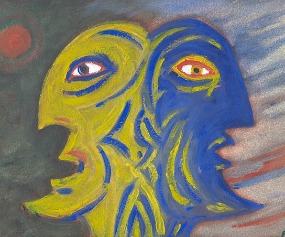
Each of us has our own preferences, our own strengths and challenges and blind spots when it comes to the function-attitudes. Yet by fostering an awareness of all eight function-attitudes and the archetypal energies they are connected to, we equip ourselves to begin the journey of self-discovery that Jung termed individuation. By welcoming all and not just some, by making room for that which lives in the shadow, by striving to find the gift offered by that which is different or challenging, we open ourselves up to the possibility of wholeness. In our willingness to accept, to not try so hard to be something we’re not, we may, if we’re lucky, become who we are.
References
Arnold, B. (Producer), and Sanders, C. & DeBlois, D. (Directors). (2010). How to train your dragon [Motion Picture]. United States: Dreamworks Animation.
Beebe, J. (2005). Evolving the eight-function model. Association for Psychological Types Bulletin, Winter, 2005, 34-39. (Reprint 2006, Australian Psychological Type Review 8(1), 39-43).
Beebe, J. (2014a). Archetypal descriptors [Chart]. Pacifica Graduate Institute Course DJA 835, Psychological Types.
Beebe, J. (2014b). The eight function-attitudes unpacked [Handout]. Pacifica Graduate Institute Course DJA 835, Psychological Types.
Sharp, D. (1987). Personality types: Jung’s model of typology. Toronto, CA: Inner City Books.
Haas, L. & Hunziker, M. (2011). Building blocks of personality type: A guide to using the eight-process model of personality type. Temecula, CA: TypeLabs.
Hillman, J. & von Franz, M. L. (1971/2013). Lectures on Jung’s typology. Dallas, TX: Spring Publications.
Images
“Dragon,” public domain
Tony Grist, “Janus” (2011).



